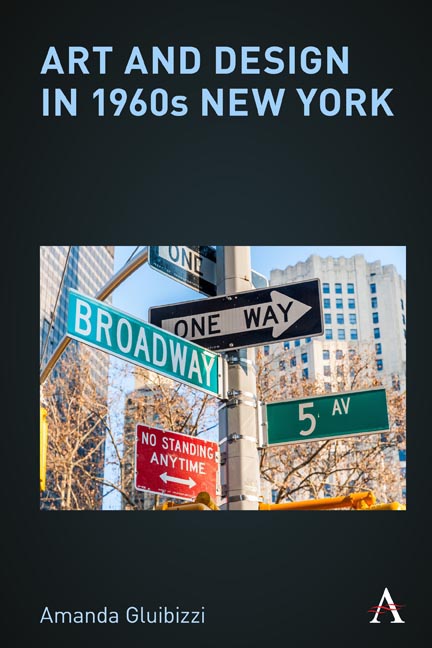Book contents
- Frontmatter
- Contents
- List of Figures
- Acknowledgments
- Introduction: The Entire Visual World
- 1 Designs on 1960s New York: The Image of Pop and North by Northwest
- 2 Breaking the Rules with the Beetle: Volkswagen’s Revolutionary Advertising and the Visual Wit of Andy Warhol’s Pop Art
- 3 Navigating by the Vernacular Glance: Billboards, Signs, and the Urban Combine
- 4 Way-Words: Wayfinding by Following Pieces
- 5 What’s the Matter with the Megalopolis?
- Notes
- Bibliography
- Index
4 - Way-Words: Wayfinding by Following Pieces
Published online by Cambridge University Press: 02 March 2021
- Frontmatter
- Contents
- List of Figures
- Acknowledgments
- Introduction: The Entire Visual World
- 1 Designs on 1960s New York: The Image of Pop and North by Northwest
- 2 Breaking the Rules with the Beetle: Volkswagen’s Revolutionary Advertising and the Visual Wit of Andy Warhol’s Pop Art
- 3 Navigating by the Vernacular Glance: Billboards, Signs, and the Urban Combine
- 4 Way-Words: Wayfinding by Following Pieces
- 5 What’s the Matter with the Megalopolis?
- Notes
- Bibliography
- Index
Summary
If, as we saw in the last chapter, the competition between billboards and street signs in New York City led to a visual cacophony that troubled designers and is suggested by Robert Rauschenberg's Combines, the situation was even graver underground. The city's subway system, one of the oldest in the United States, one of the largest in the world, and one that had been woefully disregarded for much of its life, was notably derided in 1967 by Mayor John Lindsay's own Task Force on Urban Design as “the most squalid public environment in the United States: dank, dingily lit, fetid, raucous with screeching clatter; one of the world's meanest transit facilities.” This squalid environment was exceptionally crowded (in the 1970s, an estimated 1.1 billion riders used the New York subway system annually) and rife with crime, aging trains, and that species of dirt uniquely associated with subways: “a stubborn mixture of steel dust, cast iron, and carbon dosed with a coating of oil on each particle and bound together with human hair.” The confusion and decay were partly the result of what had been three privately owned train systems running according to three separate schedules (the entire system was taken over by the New York City Transit Authority only in 1953 and then by the state-level Metropolitan Transit Authority [MTA] in 1968) and subsequently the result of neglect by the government after the city and the MTA assumed management of the train lines. The subway was, in the Task Force's eyes, an “undesigned misery,” which it “regarded as the most representative environment in New York[:] technology in the raw.” In order to reform the miserable subway, the Transit Authority hired the design firm Unimark International in the late 1960s to undertake passenger flow studies and to propose new designs for the sign systems found throughout the stations. In this chapter, I will examine the ramifications of Unimark's underground intervention by pairing it with a performance art project of surprising correspondence: Vito Acconci's Following Piece (1969). Bringing the action of signage and the action of artist together in this way permits us to explore the structural similarities, as well as the limitations, in such endeavors as following pieces.
- Type
- Chapter
- Information
- Art and Design in 1960s New York , pp. 113 - 140Publisher: Anthem PressPrint publication year: 2021



